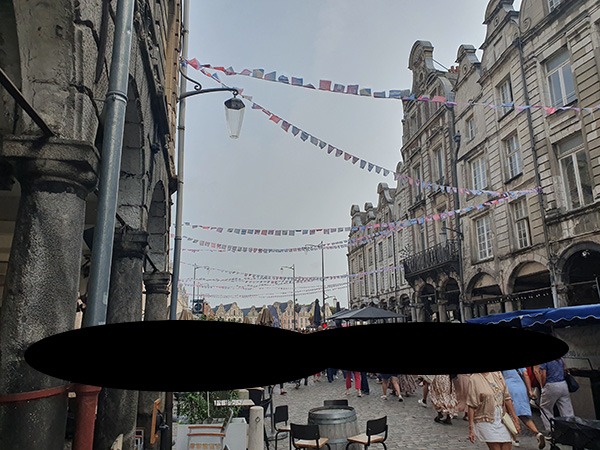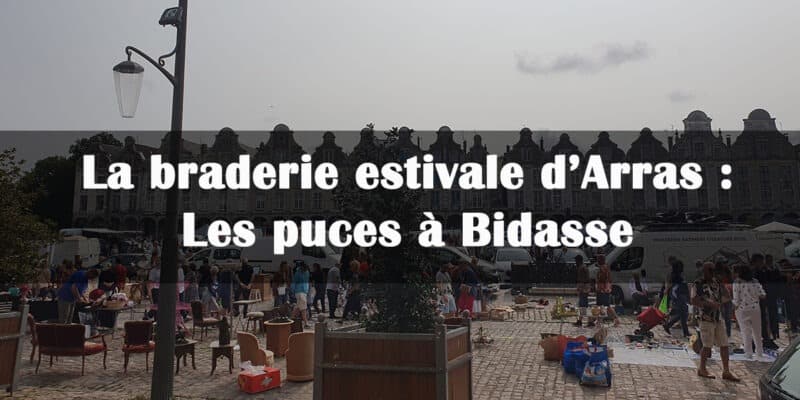Every year, in the heart of summer, Arras comes alive with one of its most eagerly awaited events: the Puces à Bidasse. This emblematic event, which attracts enthusiasts of second-hand goods, garage sales and antique treasures, is a veritable local institution. The 45th Puces à Bidasse will take place on Sunday, August 18, 2024, a date that will be a milestone for vintage enthusiasts and bargain hunters in search of that rare gem.
A not-to-be-missed event for second-hand enthusiasts
Les Puces à Bidasse is part of the local tradition, as is the Méaulens flea market, for example. Above all, it’s a moment of conviviality, a place where stories are told through objects that have stood the test of time. This open-air market takes place in Arras’ emblematic squares, including the Grand’Place, Place des Héros and Place Vacquerie. This year, due to modernization work in the city center, the perimeter of the event has been slightly extended, also incorporating the Place d’Ipswich and surrounding streets, such as the rue piétonne Wacquez-Glasson and the rue aux Ours. What makes this event so special is its ability to bring together vendors from all walks of life. With some 300 registered exhibitors, visitors can expect an impressive diversity: experienced antique dealers, passionate second-hand dealers, and private individuals eager to give a second life to forgotten objects. This mix is the very essence of the Puces à Bidasse, offering every stand a potential surprise, whether it’s a rare collector’s item or a simple everyday object that has become unusual over time.

The braderie as seen from rue de la Taillerie
Behind the scenes of the organization: well-honed logistics
Organizing an event of this magnitude requires seamless coordination, especially when the urban environment is changing, as is the case this year with the construction work underway. The town of Arras, drawing on its experience, has adapted the Puces à Bidasse itinerary to optimize the available space and accommodate the maximum number of exhibitors. The integration of new areas, such as the Place d’Ipswich, testifies to this flexibility and the desire to maintain an event that lives up to expectations. The success of the Puces à Bidasse also relies on the loyalty of its participants, both buyers and sellers. Many people from Arrage and the surrounding area, particularly from the Lille metropolitan area, return every year. For many, it’s a must-attend event in the run-up to Lille’s big braderie, which, exceptionally this year, has been moved to September to coincide with the Olympic Games.
This anticipation gives an even more special dimension to the 2024 edition of the Puces à Bidasse.
To find out more: Who is Bidasse?
The Bidasse character has its origins in French popular culture of the early 20th century. Bidasse was an affectionate nickname given to soldiers, especially those doing their compulsory military service. The name became famous through literature, theater and, above all, song, with tunes like “La Madelon” celebrating military life in a humorous, good-natured way. Bidasse embodies the image of the simple soldier, a little naïve but full of good sense, who goes through the trials of military life with a light, optimistic spirit. Beyond his role as an emblematic figure of French song, Bidasse also symbolizes an era when military service was an obligatory passage for young men, a time of camaraderie but also of self-discovery. In towns like Arras, which have a rich military history (particularly with its barracks and military cemeteries such as the one in the faubourg d’Amiens), this character is particularly resonant, recalling the generations who served in the army. So the name “Puces à Bidasse” echoes this tradition, anchoring the event in a historical context while giving it a touch of nostalgia and conviviality.
To conclude: Why do we refer to flea markets as brocante?
The term “flea market” originated in Paris in the late 19th century, and its origins are as curious as they are revealing. It is assumed that the term “flea” refers to the small parasites often associated with the old clothes and objects found at these markets. In those days, ragpickers, the salvagers of used clothing and objects, scoured the streets to collect anything that could be resold. Clothes and other objects, often of dubious origin, were reputed to be infested with fleas, which gave the market where they were sold its name: the “flea market”. This name quickly gained popularity, largely thanks to the emblematic market at Porte de Clignancourt in Paris. Initially set up on the outskirts of the city to avoid the inconvenience of second-hand goods, this market became a must for flea market enthusiasts.
Here you could find an assortment of second-hand goods, some of which still bore the scars of their past. So the name “flea market” stuck, even as these markets expanded to include antiques and rarer objects, symbolizing the link between these collectibles and their often little-known history. Today, the term “flea market” is generally used to refer to any open-air market where people come to bargain for second-hand goods. Although hygiene conditions have greatly improved, the term “flea” as used here in Arras still evokes the popular and accessible dimension of flea markets, where every object, even the most modest, can become a treasure for those who discover it. The charm of these markets lies precisely in the diversity of the objects on offer, from simple souvenirs to precious antiques, all of them bearers of a singular history.
R.C.
